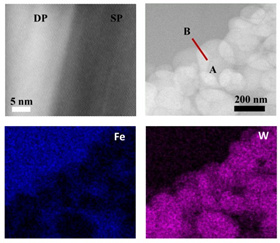[ Instrument Network Instrument Development ] In recent years, hydrogen has received increasing attention and attention. Hydrogen can be produced by natural gas reforming, but the obtained hydrogen contains CO, which easily causes poisoning of the fuel cell electrocatalyst. The cumbersome CO removal process becomes an essential part of the hydrogen production technology, significantly increasing equipment investment and operating costs. How to stably and efficiently and inexpensively produce clean hydrogen without CO becomes an important research direction of hydrogen energy development.

Jiang Heqing, a researcher at the Qingdao Institute of Bioenergy and Processes, Chinese Academy of Sciences, and the German collaborators used a ceramic oxygen permeable membrane reactor to couple the water decomposition reaction with the alkane oxidation reaction on both sides of the oxygen permeable membrane to promote water decomposition and hydrogen production (Angew. Chem Int. Ed. 2008, 47, 9341; Angew. Chem. Int. Ed. 2010, 49, 5656). Recently, the Membrane Separation and Catalysis Research Group proposed a methane steam reforming reaction in a dense ceramic hydrogen permeable membrane reactor to separate hydrogen in situ. Unlike the common polymer membranes and molecular sieve membranes, the dense ceramic hydrogen permeable membrane has a separation selectivity to hydrogen of 100%, and a completely CO-free hydrogen is obtained on the other side of the membrane. The work uses a ceramic hydrogen permeable membrane to couple the natural gas reforming reaction and the hydrogen separation process, and obtains the synthesis gas and the CO-free hydrogen required for Fischer-Tropsch synthesis in one step, simplifies the hydrogen production process, and is efficient and low-cost preparation for clean hydrogen. Provide a new way of thinking. Related results were recently published in the International Journal of Chemical Engineering, AIChE Journal (AIChE J 2019, 65, DOI: 10.1002/aic.16740).
The key to hydrogen production based on ceramic oxygen permeable membranes or hydrogen permeable membranes is to improve the stability and permeability of membrane materials. In view of the attenuation of the permeation performance of the commonly used perovskite oxygen permeable membrane Ba0.5Sr0.5Co0.8Fe0.2O3-δ in the middle and low temperature, the research team recently cooperated with the researchers of the Ulysses Research Center in Germany to dope through W element. After self-assembly at high temperature, self-assembly forms a composite film in which mono-perovskite and double perovskite coexist, thermally inducing mutual diffusion between the two phases by means of Fe and W, and in-situ regulation of the two-phase chemical composition in the composite membrane to stabilize the titanium ore structure And inhibiting its degradation, significantly improving the stability of the oxygen permeable membrane. Related results were recently published on Chem Mater (Chem Mater, 2019, 31, 7487-7492).
In addition, the problem that common cobalt-containing and iron-containing oxygen permeable membrane materials are easily reduced by deep reduction under hydrogen production conditions leads to degradation of membrane materials (ACS Sustainable Chem. Eng. 2017, 5, 8657; Int J Hydrogen Energy, 2018, 42 , 14478), the research team and the German partner tried for the first time to use a new generation of titanate ceramic membrane material SrMg0.15Zr0.05Ti0.8O3-δ which is free of Co and contains no Fe and mainly Ti. The film remained unchanged after exposure to a 20 vol.% H2 atmosphere for 100 hours, exhibiting excellent chemical stability. The Ti-based oxygen permeable membrane is used in the coupling process of water decomposition hydrogen production and methane reforming reaction, and the continuous stable operation is realized in the laboratory, and the hydrogen yield reaches 0.7 m3 h-1 m-2. This achievement is expected to solve the problem of poor stability of traditional ceramic membrane materials under hydrogen production conditions, and promote the development of ceramic membrane hydrogen production technology. Related results were recently published in the Cell issue of iScience (iScience, 2019, 19, 955-964).
The above work was funded by the National Natural Science Foundation of China and the Chinese Academy of Sciences International Cooperation Project.

PP / PE film plastic granulation production line is on hot sale. We Juli extruder has produced high-quality PP / PE film residue granulation production line for your choice. According to environmental protection , we can help you solve the recycling material . If you are searching for PP/PE Film Pelletizing Line , welcome to contact us .
Single Screw,Plastic Pelletizing Process,Pe Film Pelletizing Line,Pp Film Pelletizing Line
Nanjing Juli Chemical Machinery Co., Ltd. , https://www.jlextruder.com